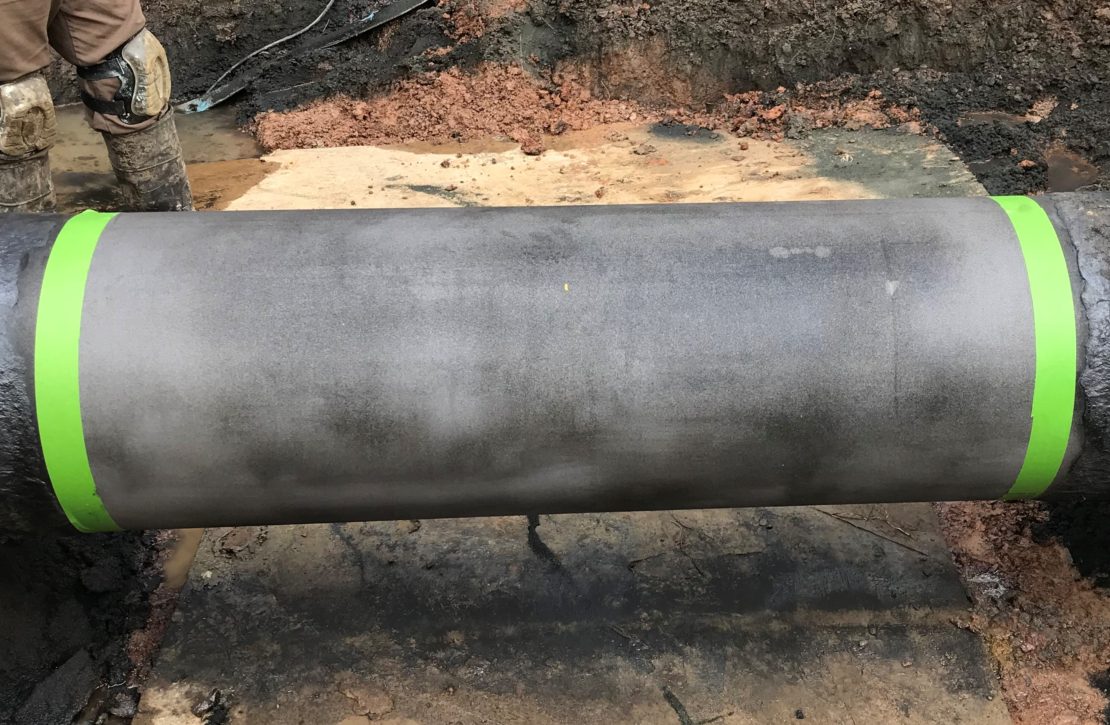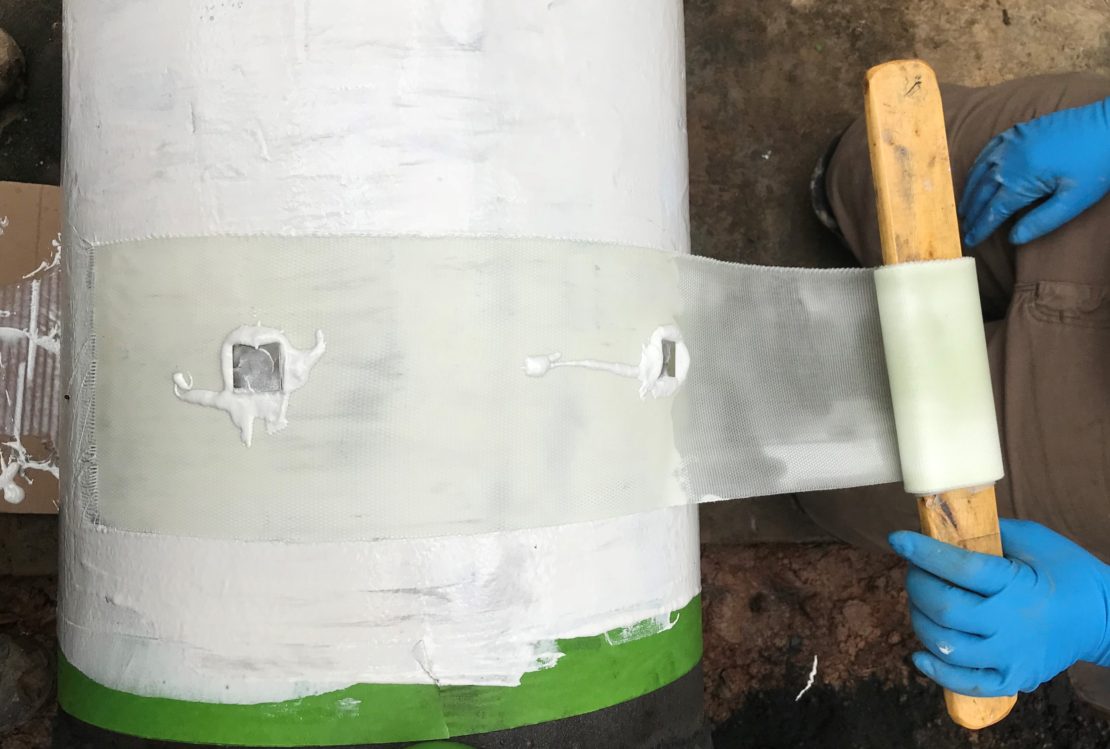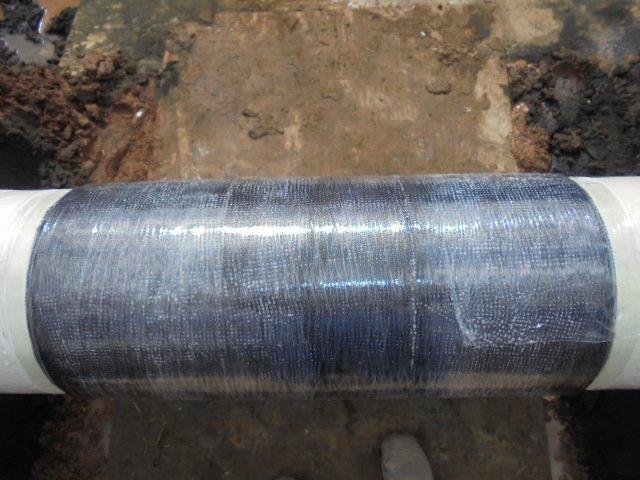Louisiana
Pipe Details
- A 16-inch (406.4 mm) pipeline carrying liquid ethylene had a seam weld anomaly
- The damaged area was 2.3 inches (58.4 mm) long, 0.001 inch (0.025 mm) wide and 0.064 inch (1.63 mm) deep
- The repair area was 3 ft (1 m) long
- 1,336 psi Maximum Operating Pressure (MOP)
- Ambient Temperature 75°F (24°C)
- Pipeline Temperature 66°F (19°C)
Summary
A liquid ethylene line suffered from manufactured defects in the seam weld and needed a repair. The pipe could not be welded on or depressurized due to the nature of ethylene. To avoid this, the Atlas™ repair system was tested with great success. Due to this test program, this seam-weld crack was repaired with 24 layers of Atlas over a 3-ft length.
Benefits
- No hot work (eliminate the risk of autoignition)
- No interruption to operation
- Supported with testing
When a seam weld anomaly was discovered on a buried 16-inch (406.4-mm) pipeline carrying liquid ethylene at a maximum operating pressure (MOP) of 1,336 psi, the pipeline operator searched for a solution that could be carried out quickly, effectively and without introducing hot work to the environment. The weld had previously failed a hydrotest, and then caused a leak during normal operation of the pipeline. The crack-like damage to the low-frequency electric resistance weld (LF-ERW) measured 2.3 inches (58.4 mm) long, .001 inch (0.025 mm) wide and 0.064 inch (1.63 mm) deep.
CSNRI experts responded to this need with a custom-designed composite repair that uses a high-strength, high-stiffness carbon fiber specially designed for crack and crack-like repairs requiring strain reduction due to dynamic loading conditions. The resin for the Atlas™ wrap is premeasured, and the structural fabric is impregnated on site using conventional equipment. The fabric is prepared for installation and wrapped around the damaged area of the pipe to the specifications dictated by CSNRI experts, who determine the number of layers based on how the pipeline is operated and on characteristics of the damaged area.


Two CSNRI supervisors and a team of installers from a local contractor mobilized to the site to carry out this seam weld repair. The trained and certified technicians cleaned the damaged section of pipe to remove the pipe coating before using a bristle blaster to achieve a surface profile equivalent to SA2.5. They wiped the prepared pipe with acetone and applied special filler material to tented/voided areas. Next, the entire repair zone was coated with a special epoxy coating. With these materials installed, technicians placed a fiberglass isolation layer with magnetic markers over the pipe so the repair area can be detected by an smart pig during future inline inspections.
The next step was to cover the entire 3-ft (1-m) long area with 24 layers of 12-inch (304.8-mm) wide Atlas composite wrap, layer over layer with offset, to provide reinforcement along the damaged weld. Once the team had securely placed all the layers of the composite, they covered the repair area with compression film, perforated it, and allowed the composite to cure.
When the cure was complete, the compression film was removed, and the line was fit for continued safe service. The repair area was later covered with a topcoat selected by the owner.
This entire repair was carried out in 2 hours and 25 minutes, restoring the line to safe service without introducing hazards to the workplace and with no disruption to operations.


